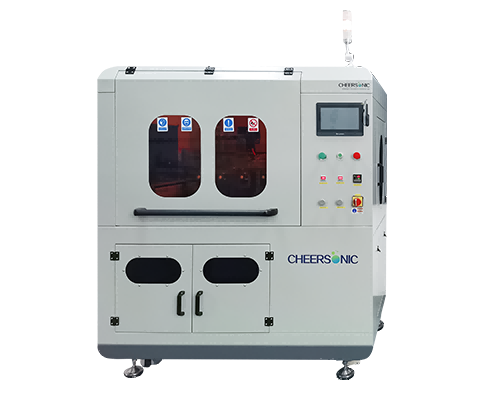Photoresist Coating Spraying Machines
Photoresist Coating Spraying Machines are essential in the semiconductor and microfabrication industries, where they apply a light-sensitive material called photoresist onto a substrate, typically silicon wafers. This process is a crucial step in photolithography, enabling the patterning of circuits and microstructures.
Key Components and Functionality
1. Coating Method:
- Spin Coating: The most common method, where the substrate is spun at high speeds to evenly spread the photoresist. This technique allows for precise control over the thickness of the photoresist layer.
- Spray Coating: Used for larger substrates or specific applications where uniformity is key.
- Roll-to-Roll Coating: Applied in flexible electronics, where the photoresist is coated on flexible substrates.
2. Process Steps:
- Cleaning: The substrate is thoroughly cleaned to remove any contaminants that could affect adhesion and performance.
- Application: The photoresist is applied using the chosen coating method, ensuring an even layer.
- Soft Bake: The coated substrate is heated to remove solvents from the photoresist, improving adhesion and preparing it for exposure.
- Exposure: The photoresist-coated substrate is then exposed to ultraviolet (UV) light through a mask, transferring the desired pattern onto the photoresist.
- Post-Exposure Bake: Further heating enhances the chemical reaction initiated by exposure, improving resolution and stability.
- Development: The substrate is treated with a developer solution that removes either the exposed (positive photoresist) or unexposed (negative photoresist) areas, revealing the underlying substrate.
3. Benefits:
- Precision: Enables high-resolution patterning necessary for modern electronic devices.
- Versatility: Suitable for various applications, including integrated circuits, MEMS, and optoelectronics.
- Scalability: Capable of handling both small-scale laboratory applications and large-scale manufacturing.
4. Advancements:
- Recent innovations include improved materials for photoresists, such as low- and ultra-low-k dielectrics, which are critical for advanced nodes in semiconductor manufacturing.
- Automation and integration with metrology tools enhance the accuracy and efficiency of the coating process.
In summary, photoresist coating machines are pivotal in the fabrication of electronic devices, enabling the precise application of photoresist for the creation of intricate patterns essential for modern technology.
About Cheersonic
Cheersonic is the leading developer and manufacturer of ultrasonic coating systems for applying precise, thin film coatings to protect, strengthen or smooth surfaces on parts and components for the microelectronics/electronics, alternative energy, medical and industrial markets, including specialized glass applications in construction and automotive.
Our coating solutions are environmentally-friendly, efficient and highly reliable, and enable dramatic reductions in overspray, savings in raw material, water and energy usage and provide improved process repeatability, transfer efficiency, high uniformity and reduced emissions.
Chinese Website: Cheersonic Provides Professional Coating Solutions

